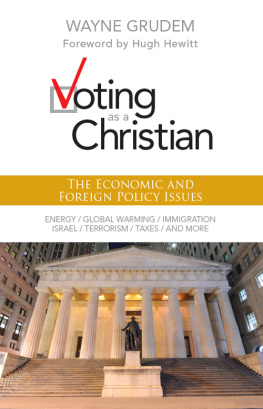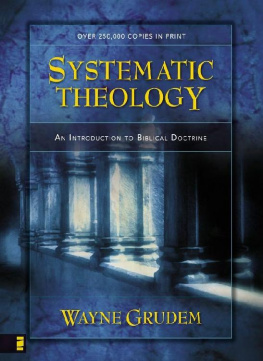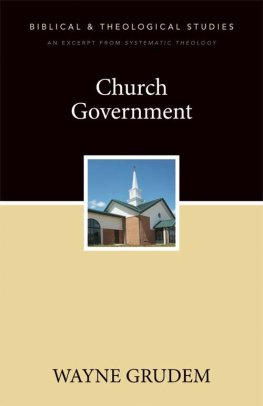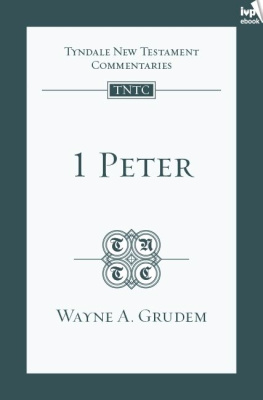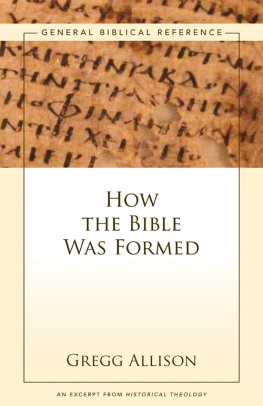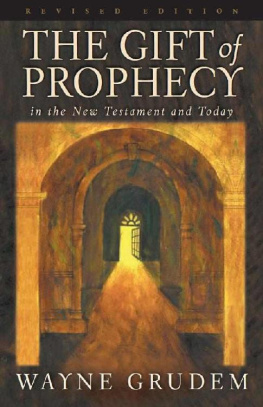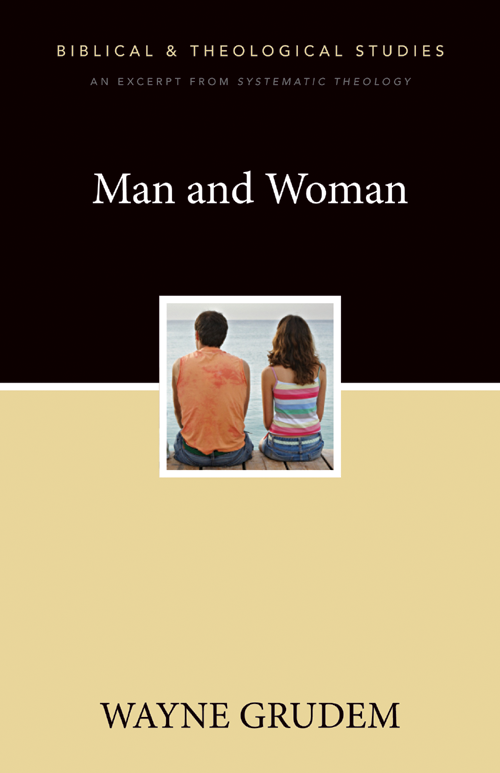
Man and Woman
Previously published in Systematic Theology
Copyright 1994 by Wayne Grudem
Appendix 6 and glossary copyright 2000 by Wayne Grudem
Requests for information should be addressed to:
Zondervan, Grand Rapids, Michigan 49530
EPub Edition JANUARY 2012 ISBN-13: 978-0-310-49622-9
Unless otherwise noted, Scripture quotations are taken from the Revised Standard Version of the Bible, copyright 1946, 1952, 1971, by the Division of Christian Education of the National Council of Churches of Christ in the USA, and are used by permission. However, the author has, with permission, modernized archaic personal pronouns and has changed the verbs accordingly.
Scripture quotations marked NASB are from the New American Standard Bible, copyright 1960, 1962, 1963, 1968, 1971, 1972 by the Lockman Foundation, La Habra, California. Used by permission.
Those marked NIV are from the Holy Bible: New International Version. NIV. Copyright 1973, 1978, 1984 by International Bible Society. Used by permission of Hodder and Stoughton Ltd. and Zondervan.
Use of italic in Scripture quotations indicates Wayne Grudems emphasis.
Any Internet addresses (websites, blogs, etc.) and telephone numbers in this book are offered as a resource. They are not intended in any way to be or imply an endorsement by Zondervan, nor does Zondervan vouch for the content of these sites and numbers for the life of this book.
All rights reserved under International and Pan-American Copyright Conventions. By payment of the required fees, you have been granted the non-exclusive, non-transferable right to access and read the text of this e-book on-screen. No part of this text may be reproduced, transmitted, down-loaded, decompiled, reverse engineered, or stored in or introduced into any information storage and retrieval system, in any form or by any means, whether electronic or mechanical, now known or hereinafter invented, without the express written permission of Zondervan.
Cover design: Ron Huizinga
Contents
: Man as Male and Female
Why did God create two sexes? Can men and women be equal and yet have different roles?
Man As Male and Female
Why did God create two sexes? Can men and women be equal and yet have different roles?
EXPLANATION AND SCRIPTURAL BASIS
One aspect of mans creation in the image of God is his creation as male and female: So God created man in his own image, in the image of God he created him; male and female he created them (Gen. 1:27). The same connection between creation in the image of God and creation as male and female is made in Genesis 5:12, When God created man, he made him in the likeness of God. Male and female he created them, and he blessed them and named them Man when they were created. Although the creation of man as male and female is not the only way in which we are in the image of God, it is a significant enough aspect of our creation in the image of God that Scripture mentions it in the very same verse in which it describes Gods initial creation of man. We may summarize the ways in which our creation as male and female represents something of our creation in Gods image as follows:
The creation of man as male and female shows Gods image in (1) harmonious interpersonal relationships, (2) equality in personhood and importance, and (3) difference in role and authority.
A. Personal Relationships
God did not create human beings to be isolated persons, but, in making us in his image, he made us in such a way that we can attain interpersonal unity of various sorts in all forms of human society. Interpersonal unity can be especially deep in the human family and also in our spiritual family, the church. Between men and women, interpersonal unity comes to its fullest expression in this age in marriage, where husband and wife become, in a sense, two persons in one: Therefore a man leaves his father and his mother and cleaves to his wife, and they become one flesh (Gen. 2:24). This unity is not only a physical unity; it is also a spiritual and emotional unity of profound dimensions. A husband and wife joined together in marriage are people that God has joined together (Matt. 19:6). Sexual union with someone other than ones own wife or husband is a specially offensive kind of sin against ones own body (1 Cor. 6:16, 1820), and, within marriage, husbands and wivesno longer have exclusive rule over their own bodies, but share them with their spouses (1 Cor. 7:35). Husbands should love their wives as their own bodies (Eph. 5:28). The union between husband and wife is not temporary but lifelong (Mal. 2:1416; Rom. 7:2), and it is not trivial but is a profound relationship created by God in order to picture the relationship between Christ and his church (Eph. 5:2332).
The fact that God created two distinct persons as male and female, rather than just one man, is part of our being in the image of God because it can be seen to reflect to some degree the plurality of persons within the Trinity. In the verse prior to the one that tells of our creation as male and female, we see the first explicit indication of a plurality of persons within God: Then God said, Let us make man in our image, after our likeness; and let them have dominion (Gen. 1:26). There is some similarity here: just as there was fellowship and communication and sharing of glory among the members of the Trinity before the world was made (see John 17:5, 24), so God made Adam and Eve in such a way that they would share love and communication and mutual giving of honor to one another in their interpersonal relationship. Of course such reflection of the Trinity would come to expression in various ways within human society, but it would certainlyexist from the beginning in the close interpersonal unity of marriage.
Someone might object that such a representation of the plurality of persons in God is not really a complete one, for God is three persons in one while God created Adam and Eve as only two persons in one. If God intended us to reflect the plurality of persons in the Trinity, why did he not create three persons rather than two who could reflect the interpersonal unity among the members of the Trinity? First, we must agree that this fact shows the analogy between marriage and the Trinity to be an inexact one. Second, although we cannot be certain of the reasons why God did not do something when Scripture does not explicitly tell us those reasons, we can suggest two possible answers: (1) The fact that God is three in one while Adam and Eve were only two in one may be a reminder that Gods own excellence is far greater than ours, that he possesses far greater plurality and far greater unity than we ourselves, as creatures, can possess. (2) Though the unity is not exactly the same, the unity in a family among husband,wife, and children, does also reflect to some degree the interpersonal unity yet diversity of persons among the members of the Trinity.
A second objection might be raised from the fact that Jesus himself was unmarried, that Paul was unmarried at the time he was an apostle (and perhaps earlier), and that Paul in 1 Corinthians 7:1, 79 seems to say that it is better for Christians not to marry. If marriage is such an important part of our reflection of the image of God, then why were Paul and Jesus not married, and why did Paul encourage others not to be married?
For Jesus, the situation is unique, for he is both God and man, and sovereign Lord over all creation. Rather than being married to any one individual human being, he has taken the entire church as his bride (see Eph. 5:2332) and enjoys with each member of his church a spiritual and emotional unity that will last for eternity.


